Go Crazy - Part 1
Posted on
I may have mentioned my love of crazy patchwork before(!) and in a bid to spread the love I've decided to run a series of blogs covering some of the basic techniques. This, being the first, is Part One and in it I'll try and explain how to start creating a square of unique lovliness...
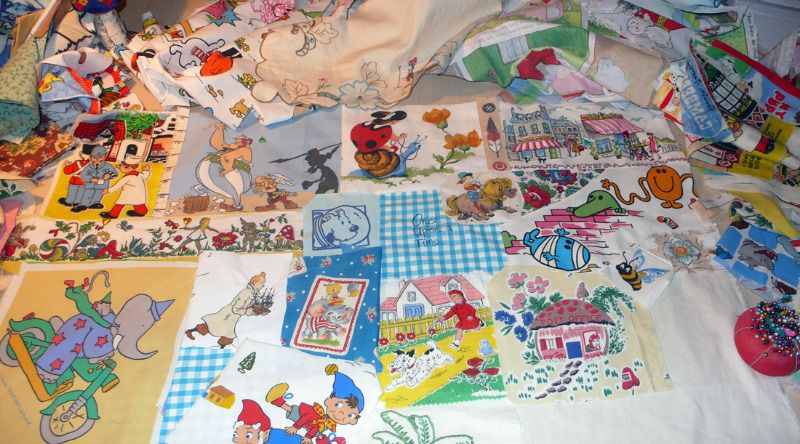
Crazy patchwork is a joyous, liberating sewing experience. It's the antidote to the careful measuring, seam aligning, set piece patchwork of templates and patterns. It's also the perfect way to use up all your favourite bits of fabric, lace and linens - even tiny pieces can be used because sometimes, (whisper it), we sew without hemming!
In part one we're going to make a simple sqaure; partly because it's easier, but mainly because squares can be made into anything! Once completed you can have a cushion or a bag or a piece of art or...you can make more squares, join them up and have the most original quilt in town. Essentially, crazy patchwork will turn an old bit of calico and a few scraps into a new piece of fabric that you can use for just about anything.
There are many crazy patchwork methods to be explored but lets start with three.
BASIC PIECING
Square up a piece of cotton, calico or linen to the size that you want. The backing fabric can be old and any colour but cotton, cotton blend, or linen work best. Make sure it is pre-washed. Then gather up your fabrics and scraps. Cut some random shapes with scissors or a wheel, but try to keep all your edges straight which will make your life much easier when you come to piece them together. At this stage do AVOID any slippery fabrics like nylon, chiffon, velvet, etc... Learning a new technique is enough of a challenge at the start, be kind to yourself and pick cottons and linens...
Method One - No Hems!
Start with a 4 or 5 sided piece of fabric and place it either in the centre or in one corner of your backing square. Lace you machine with some invisible, nylon thread and stitch this piece to your backing fabric. Now start adding pieces. Place your next piece along one edge of your first patch, overlap the edge by about 6mm, and pin, or stick, in place. Set your machine to a medium zigzag stitch and machine the two patches along the join making sure you catch each side as you go. If your second piece is the wrong size or shape just chop it to make it right. Now keep adding pieces so that you cover all the edges of piece number one, and radiate out. Just keep placing the next piece along an exposed edge, pin or stick and then zigzag with the invisible cotton. Honestly. That's It!
Continue adding pieces along all the edges until you have covered the whole square then press the whole thing with a warm iron and start embellishing the joins with decorative stitches!
(NO ZIGZAG on your machine? Just do two rows of straight stitch making sure that you have caught the edges all the way along)
Method Two - Flipping!
As with the first method , place your 4 or 5 sided piece of fabric on your backing square. Either baste it or use a temporary adhesive to secure it. Now take your next piece and lay it face DOWN over the first piece with two edges lined up together. Stitch the second patch to the first along the seam with a small (5mm) allowance. Once done flip the second piece of fabric over so that you are seeing the right side. Smooth it along your sewn seam and press flat.
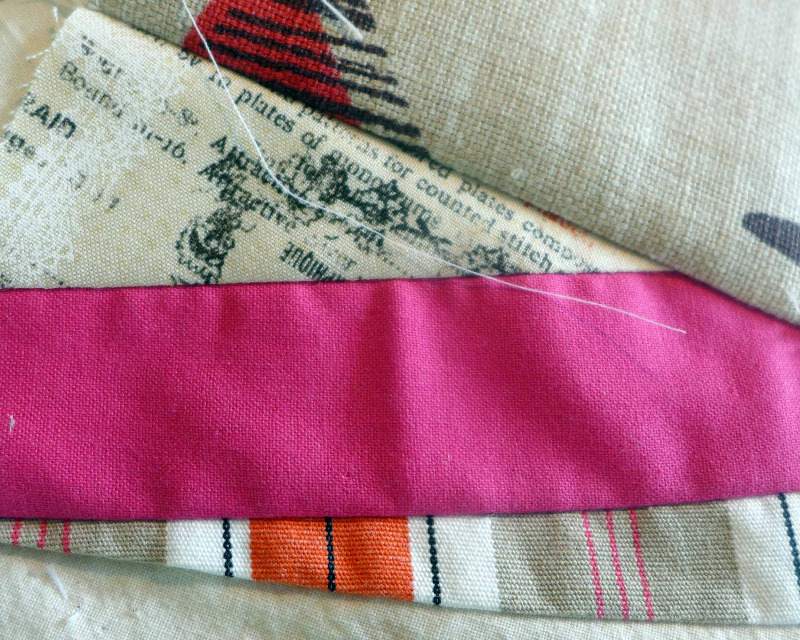
Continue in the same way around the first patch until all the edges are covered and then radiate out, adding patches to cover each raw edge as you go.
At some point you will find that there are two, or even three raw edges left in one spot and this technique won't cover them all - Don't Panic!!
You can use the technique from method one and then cover any exposed edges with later embellishments. Or have a look at method three below...
Method Three - Mix & Match
Sometimes you will find it difficult to stick to the traditional methods of piecing, especially if you are creating a block that is based on pictorial fabrics or specific shapes. If you are making something that needs to be hardwearing and stand up to a lot of washing, you might also want to avoid the raw edge technique of method one. In which case you need a bit of a mix- it's not too onerous though and still leaves plenty of creative space.
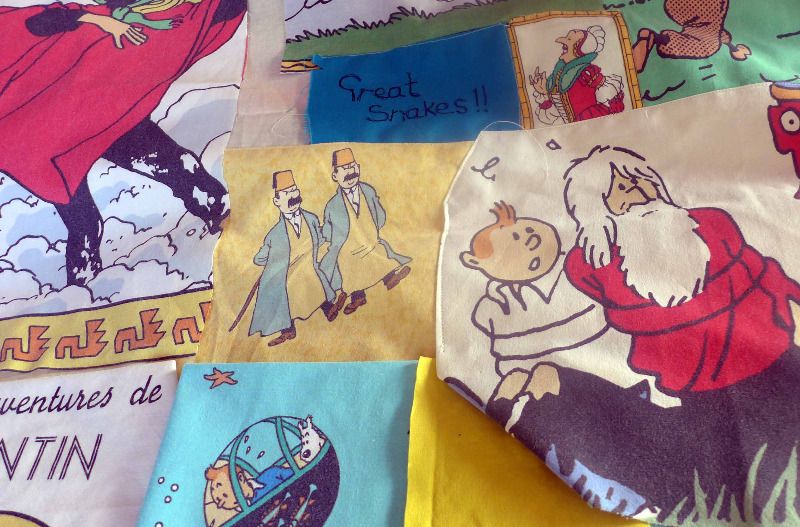
Your first two or three patches are going to be added in the same way as method two but pretty early on you may find that you want to add a particular sized or shaped picture that won't cover the raw edges in the way you want. Here's what to do...
Place the patch on the fabric where you want it. If one edge can be sewn using the flip method then fold and create a crease to mark it - try and pick the longest edge for this if you can. Once you've flipped that first edge, your fabric is facing the right side out so, obviously, flippng is finished. If you want a neat edgefinish along the remaining edges, you'll need to turn the fabric under to create a tiny hem, press flat and machine from the top. So, for each edge, you'll need to work out the lines that you need, fold the fabric and iron to create the crease. Sew your flip seam first, then flip your fabric and oversew the turned under edges. You need to have more of a plan for this method to ensure that you are stitching edges in the right order.
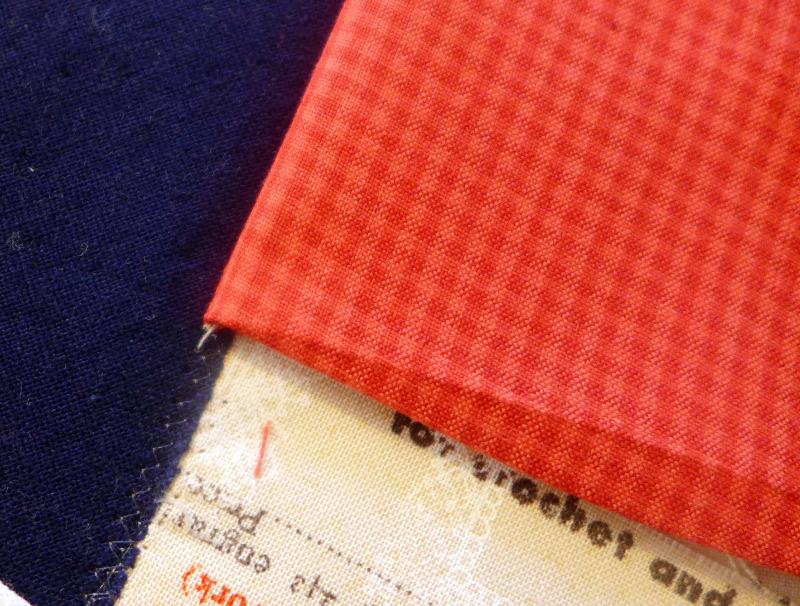
This method requires you to hold your nerve and keep piecing and re-piecing to get the balance of size and colour that works best. If you are using large pieces of fabric for some patches try to balance them out on the backing fabric and then work with smaller pieces to join them up. Always baste or stick large pieces before machining, otherwise they will start to bunch up and slide as you sew.
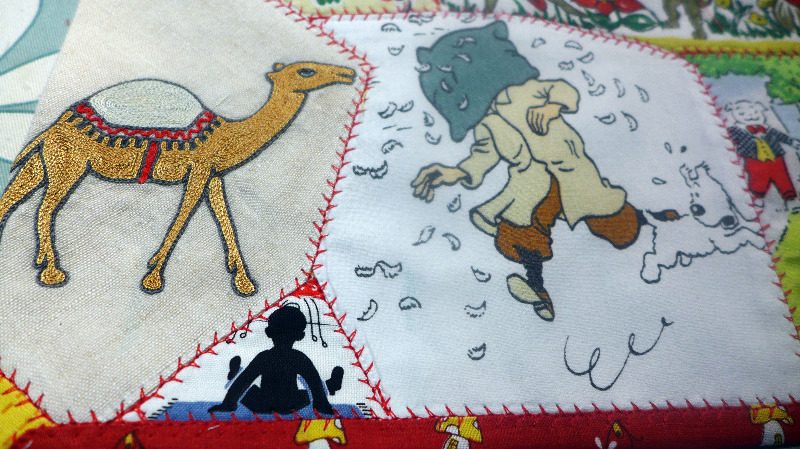
The key to staying crazy is the irregular shapes of the fabrics. If you find that your pattern is starting to look a bit too traditional, go back and check that you have got odd numbered edges to your pieces.
Next Time....
We'll talk about embellishments, long seams and how to avoid having to cover the joins. I'll upload more pictures as the weeks go by to make the techniques easier to follow but in the meantime do ask a question or post a comment.
Happy Stitching x
P.S. These scrap packs are just the ticket for adding to your crazy patchwork stash...
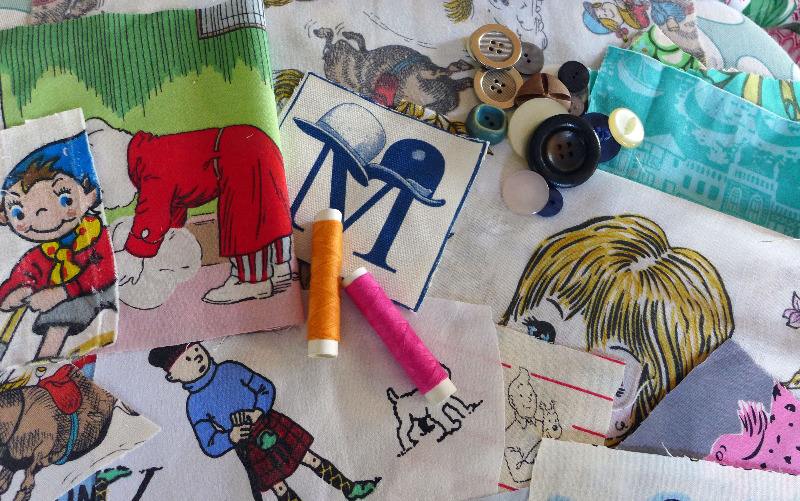
Add a comment: